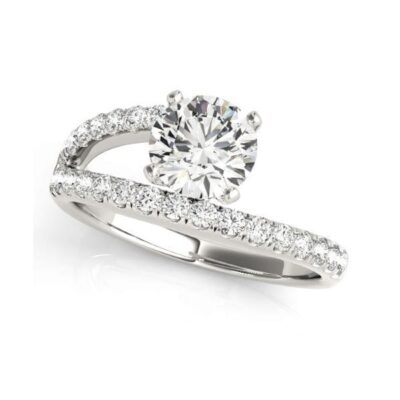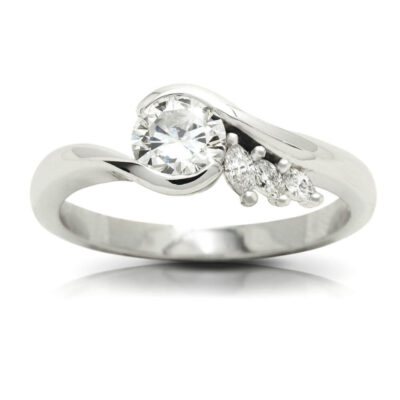Modern Engagement Rings
If your partner favours contemporary styles in fashion, art, and music, then a modern engagement ring might well be the right choice. But what does this mean in practice? Previous eras are typically associated with specific styles: vintage-style engagement rings from before World War One were often elaborately set with many small diamonds; Art Deco rings from the interwar era tend to be much simpler, featuring straight edges, geometric shapes and bold lines; while solitaire and trilogy styles are timeless classics, spanning many decades. By definition, contemporary engagement rings don’t fall into any of these categories – but while it’s easy to say what they aren’t, it’s harder to define what they are.

Simple Designs With Clean Lines

While there isn’t a single technical feature common to all modern style engagement rings, it is true to say that most of them are stripped back, simple designs that feature clean lines. Beyond that, there are a handful of features that are often associated with contemporary style rings. Tension settings (or alternatively faux-tension settings) are one of these. In a tension set ring, the gemstone is held in place by compression, or merely appears to be in the case of a faux-tension setting. The shank tends to be as wide or wider than the gemstone, giving the ring a chunky, modern appearance. The tension setting was pioneered within the last forty years by the German manufacturer Niessing, and is perhaps the archetypal modern engagement ring. A swirl style setting is a variation on a faux-tension setting. In both instances, metal is pushed over the girdle of the gemstone to secure it, and the culet or tip of the diamond is recessed into a bridge (sometimes replaced by a bezel). The difference is that with a swirl setting, the shoulder of the ring extends to ‘swirl’ around the gemstone. Another popular contemporary configuration is to set a single gemstone in a rub-over setting (where a rim of metal extends all the way round the gemstone). This gives a simpler, cleaner finish than the traditional claw setting.
Unconventional Alignment Of Gems

Finally, the alignment of the gemstone itself can give a clue as to whether you are looking at a contemporary style engagement ring. Traditionally elongated gems (like oval cuts, emerald cuts, and marquise cuts) have typically been set with the long side of the stone running along the length of the finger, the idea being that this configuration is most flattering to the hand. Recently, however, it has been increasingly common to see diamonds and gemstones set the other way, running across the finger for a modern look, or offset, perhaps at forty-five degrees.
Please feel free to get in touch if you have any questions, or to discuss commissioning your own bespoke design.